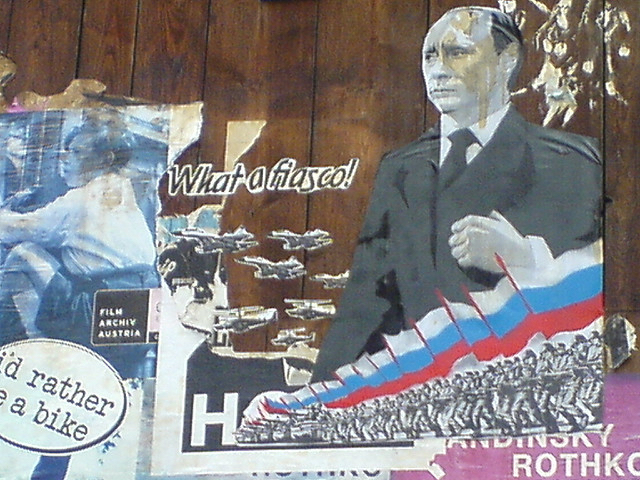With the pardon of Joe Arpaio, the Trump Administration is again using racism as its political guiding light. The language of the pardon cites Arpaio for exemplary “selfless public service” and praises him for “his life’s work of protecting the public from the scourges of crime and illegal immigration.”
The juxtaposition of crime and immigration points directly to how racism operates in Trump’s language of association.The pardon celebrates a man who a federal court found guilty of criminal contempt for a decade of flagrant and repeated refusal to comply with court orders protecting the rights of Hispanic citizens.
Donald Trump has been a direct beneficiary of the racism that Arpaio has cultivated for years. The pardon repays Arpaio for that benefit. When I began living in Maricopa County fifteen years ago, Joe Arpaio at first seemed the clown-sheriff, a far-right hot-air show-off and old-boy. There was always a comic quality to the man. It spoke to local political misery that such an egotistic fool could not only hold an important office, but also run up impressive re-election victory margins for almost a quarter century.
But Arpaio was more than a political clown. He was a Southwestern reincarnation of Bull Connor. Unlike his Alabama predecessor, who spoke in forthright terms of segregation and inveighed against ‘outsiders’ protesting for civil rights, Arpaio had learned a newer language that sought to conceal its racism. He reformulated anti-Hispanic racism to speak in terms of upholding the law while sheriff’s deputies stopped and arrested tens of thousands of brown people for the color of their skin. Arpaio’s racism, quite like Bull Connor’s, always sought to establish its authority under color of law. It sought to claim the respect, even the love of its victims. Joe Arpaio runs on about how much Hispanics actually like him, much as Bull Connor would talk about how well he got along with blacks – so long as they did not try to cross the color line.
His tough-guy bombast and not-so-covert racism made Arpaio probably the only county-level law enforcement officer in the United States with a global reputation. An unbelieving international press corps made Phoenix a regular stop in order to report juicy quotes and Arpaio revelled in the attention, even as he left interviewers shaking their heads. He made sure they filmed the chain gangs that he re-introduced into US jails after a generations-long lapse. His innovation of a women’s chain gang mocked equal rights for women.
In Spring 2005 I joined an ACLU group tour of Durango and Estrella jails, as well as Tent City. What struck me were not the conditions at the infamous Tent City. Heresy though it may sound to some ears, the Tent City conditions were not terrible. There were fresh showers, cold water, lockers, television, and a daytime-use air-conditioned sitting area next to the large group tents, which are the same as the military uses in field conditions. Not pleasant, but not bad either. I believed the guide when he said that many prisoners preferred Tent City to being cooped-up in a pod unit barely seeing the sky for months.
What struck me was the officer’s continual praise of the Great Leader, the sheriff under whose authority this prison-world operated. Arpaio was the star. The CO told of how Arpaio would wander in the yard unprotected to chat with the men, and how prisoners asked for his signature and wanted their picture taken together the sheriff. This was a prison society organized along the clear lines of a Mussolini-style fascism, with an ego-bloated leader surrounded by military guards all lording it over an abject population forced to wear pink uniforms to sign their supposed humiliation.
This same flair for creating and dramatizing abjection through white law-and-order brought Arapio and Trump into parallel orbits. First, one identifies an abject group for subject to social discipline; then one engages in rhetorical condemnation and threats that group with demands for stricter law enforcement. Donald Trump discovered the political potential of this strategy when he took out full-page newspaper ads in 1989 demanding the death penalty for the Central Park Five, five black teenagers whose confessions to the rape of a white businesswoman were beaten out of them and whose sentences were vacated after another man’s confession and positive DNA evidence. Trump constituted himself as the line between urban ‘savages’ and civilization.
Donald Trump has been the voice of wealthy East Coast white racism since those days, an updated billionaire version of Tom Buchanan in The Great Gatsby. Arpaio, an easterner turned pseudo-westerner with cowboy boots, has done the same for the Southwest in associating undocumented immigrants with horrendous crime. Trump’s pardon acknowledges, preserves, and furthers that alliance. Both seek to make the United States’ southwestern border a twenty-first century color line, another line between savagery and civilization. The local self-help immigration enforcement that Arpaio tried to effect in defiance of federal court orders has been no more than an attempt to re-whiten an Arizona that was never ‘white’. Trump is operating in support of the same idea with his efforts to fund and build an impenetrable wall against brown people from the south.
How did one Arizona county find itself a center of political racism in the United States? Maricopa County mirrors a widespread demographic and political shift towards people of color that slowly has and will continue changing political life in the U.S. The county’s white-only population is declining rapidly and the combined population of people of color is rising. Change is on the horizon for all to see. Social fears about the future of whiteness and white political power have generated a politics of contempt and hatred. A presidential pardon spits in the face of Hispanics who have been angered justifiably by police harassment and attempted intimidation.
The pardon denies not only Arpaio’s criminal behavior, but also that this behavior took place within a far broader scope of anti-Hispanic racial profiling and discrimination. Instead of a racist cop, Arpaio becomes a white hero. Together Trump and Arpaio represent the proposition that white dominance will continue unchanged.
Even Arizona Republican reactionaries such as John McCain and Jeff Flake can see change underway and have condemned the Arpaio pardon. However, together with other Republican Party leaders, they share political responsibility for the anti-Hispanic racism that Trump promotes. For anti-Trump Republicans and other occasional discontents such as Paul Ryan, it is easier to denounce the Arpaio pardon than confront their own role in its making.
Prevailing optimism in mainstream Arizona society prefers to look forward, and if backwards, then not much further than its pioneer days. The rest becomes Indian folklore and archeology. Arizona remains closer to its colonial origins, perhaps, than any other state in the Lower Forty-eight. Despite bulldozers clearing ground for new suburban developments, the history of colonialism continues to be easily visible. Colonial societies erected themselves on racial subordination and Arpaio’s Arizona is no different.
At root, the contest against the white supremacist forces Arpaio represents is an anti-colonial one. No presidential pardon can void this contest.
Photograph courtesy of Gage Skidmore. Published under a Creative Commons license.





